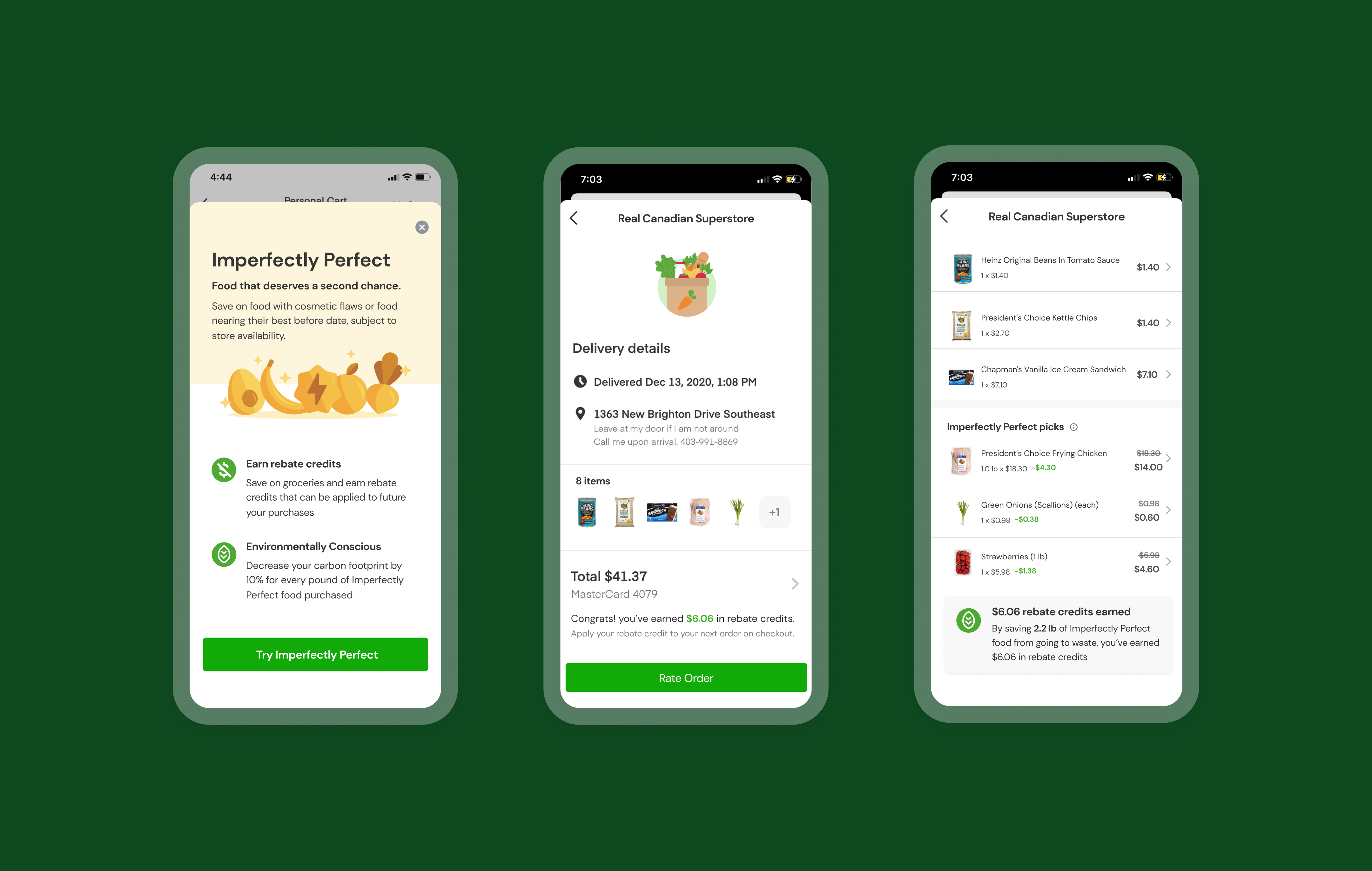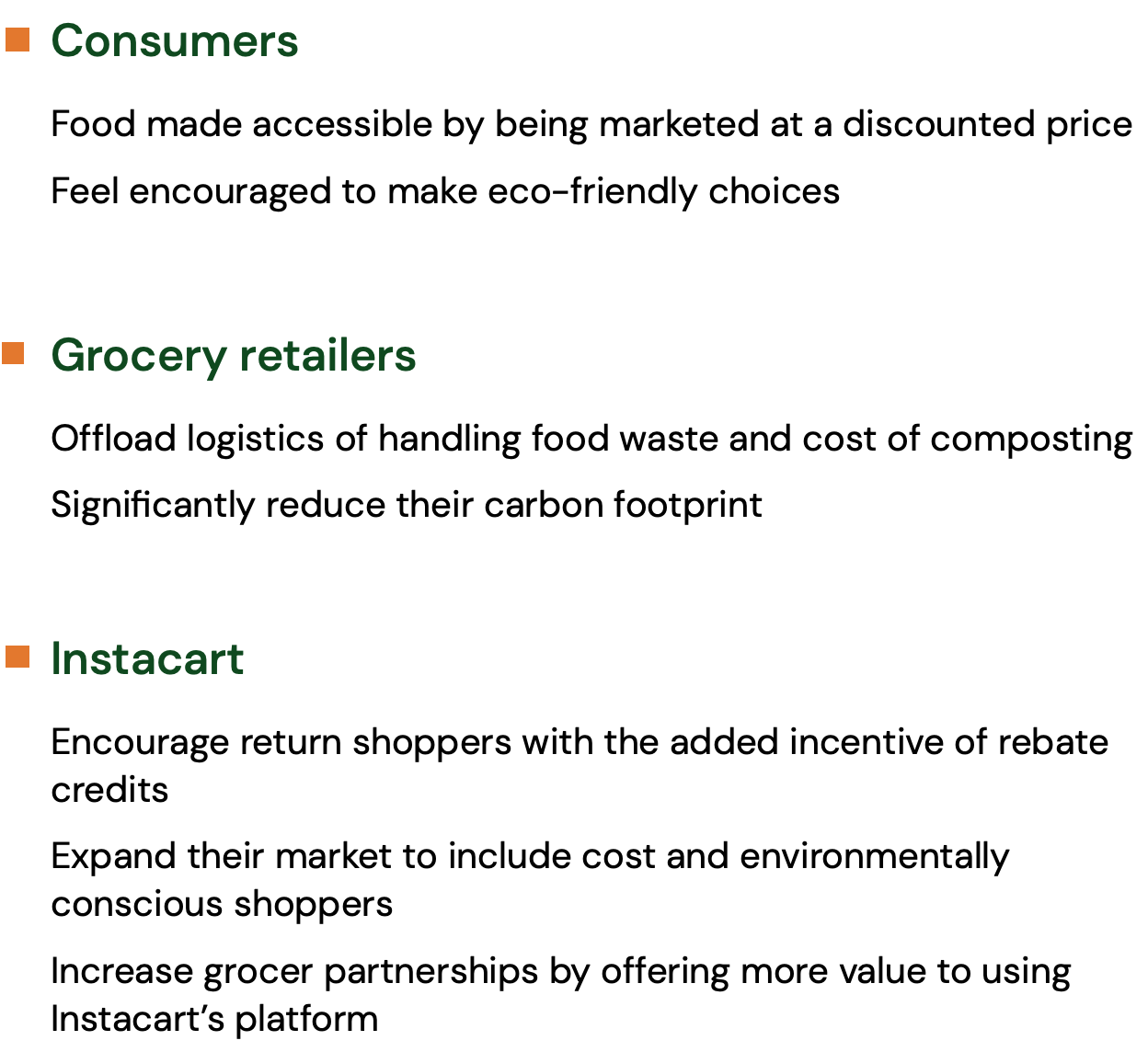Imperfectly Perfect is an in-app feature on Instacart that allows shoppers to purchase produce at a discounted price. This feature aims to create access to quality, edible produce that would otherwise go to compost.

Overview
Tools
Figma, Keynote
Time
15 Hours
This is a speculative project completed over 15 hours and submitted as a part of an interview process that led to a successful job offer. The prompt was:
Choose an existing company or an organization, and help them design a mobile experience that allows an individual to tackle a major problem afflicting society today
SOCIETAL PROBLEM
Why tackle food waste?
Every day, grocery stores in Canada throw away 8.5 million dollars worth of food, much of which is still edible, but not marketable (b-grade produce). Qualities of b-grade produce include cosmetic damages and food nearing their expiration date. Wasted food is responsible for 6% of global greenhouse gas emissions (methane), which significantly contributes to the issue of climate change.

ORGANIZATIONAL PROBLEM
Grocery retailers - Loss of revenue
Grocery retailers have taken steps to divert potential food waste through improving procurement and shortening supply chains to keep food fresher and longer. Despite these efforts, grocery retailers are left with a significant amount of food which typically gets sent to the landfill. This translates to a loss of revenue and resources spent in managing logistics around food waste.

Given the scope of this project, I narrowed my focus to grocery stores that have an existing partnership with Instacart. This is to leverage Instacart’s ecosystem and fulfillment platform that allows for tracking inventory, food scanning system, and trained employees.
WHY INSTACART?
Staying ahead of competition
While Instacart has been steadily capturing the online grocery market, there continues to be competitors that offer niche value to grocery retailers. Companies like Flashfood and Imperfect foods, help grocery retailers curb food waste by offering a platform that sells discounted food prior to its expiration date.
By tackling the issue of food waste, Instacart would create an added value to their platform, eliminating the need for grocery retailers to maintain external partners.

Project goal
Based on the insights gathered from my research, I wanted to reframe food waste as value to all 3 sides of the marketplace. I formulated the following how might we questions to ideate on ways to deliver value to our stakeholders:


IDEATION
Project constraints
Initially, I had a few exploratory and out of the box ideas brimming in my mind but creating the following constraints helped me with staying within scope of this project. My goal was to find the least obstructive way to surface this feature so I decided to build upon instacart’s existing shopping flow.


PRE-PURCHASE
Feature opt-in
While adding products to cart, Instacart customers can opt in to purchase b-grade produce. Since the replacement items are subject to store availability, shoppers will receive rebate credits after the product replacements have been determined and the order has delivered.
Grocery store employees will have sorted a section of b-grade produce for Instacart Personal Shoppers to fulfill shoppers' orders.
POST-PURCHASE
Order breakdown
Upon delivery of the order, shoppers will receive rebate credits for the price difference of the replaced items. These credits can be applied to shopper's future Instacart purchases.
Shoppers can access a breakdown of their bill along with information on what items were discounted under this feature.
POST-PURCHASE
Activity summary
In the credits & promotion section, shoppers can view their available rebate credits, money saved and the amount of food they’ve prevented from going to waste.
By providing a summary of their performance, this feature helps shoppers understand their positive contributions to climate change and encourages greener behaviours.
Value to stakeholders


Measuring success
Here are some measurable metrics to evaluate the success of this feature:
Scaling it forward
To build this feature out incrementally, I scoped out further growth opportunities: